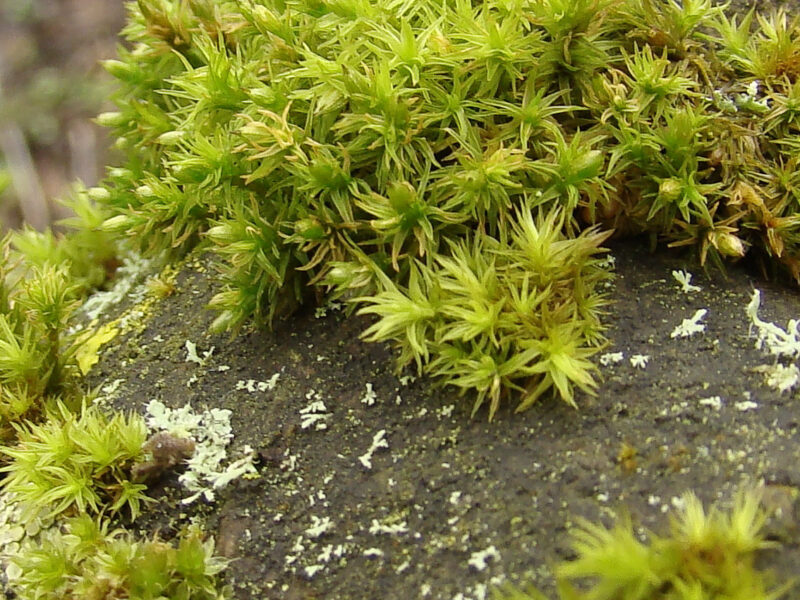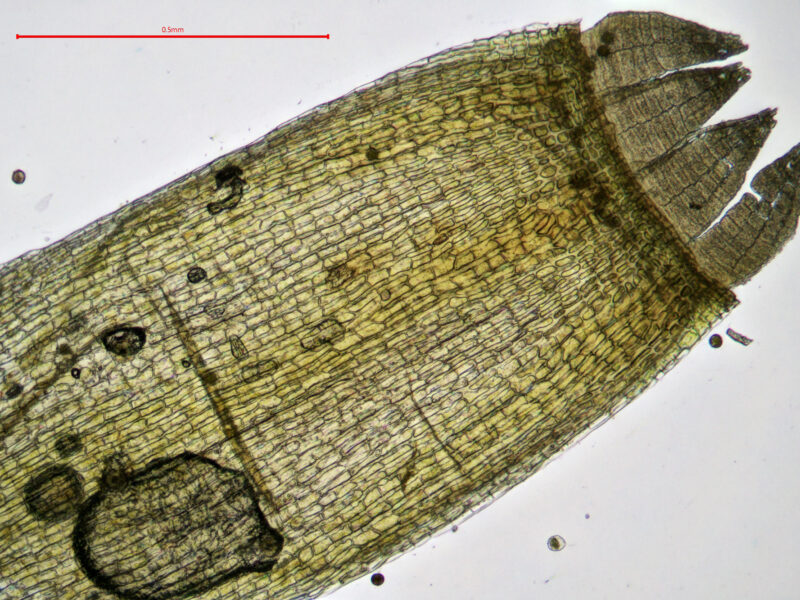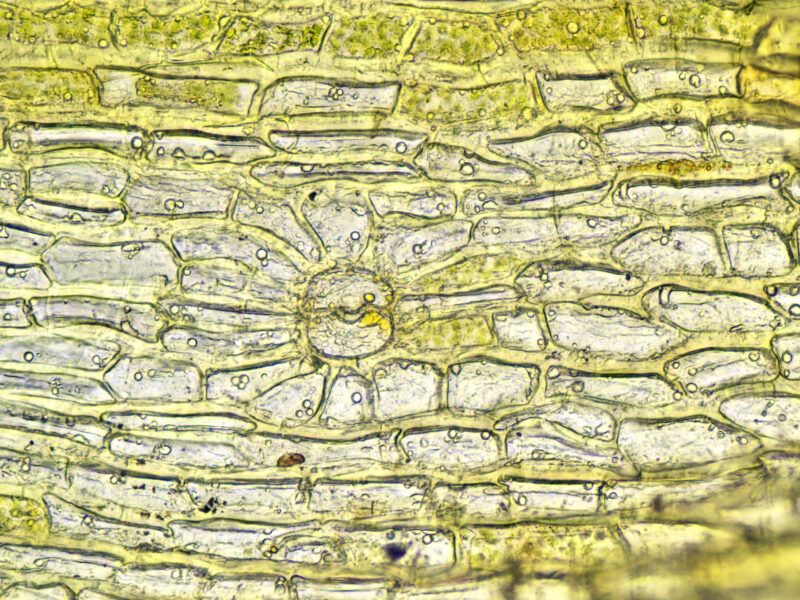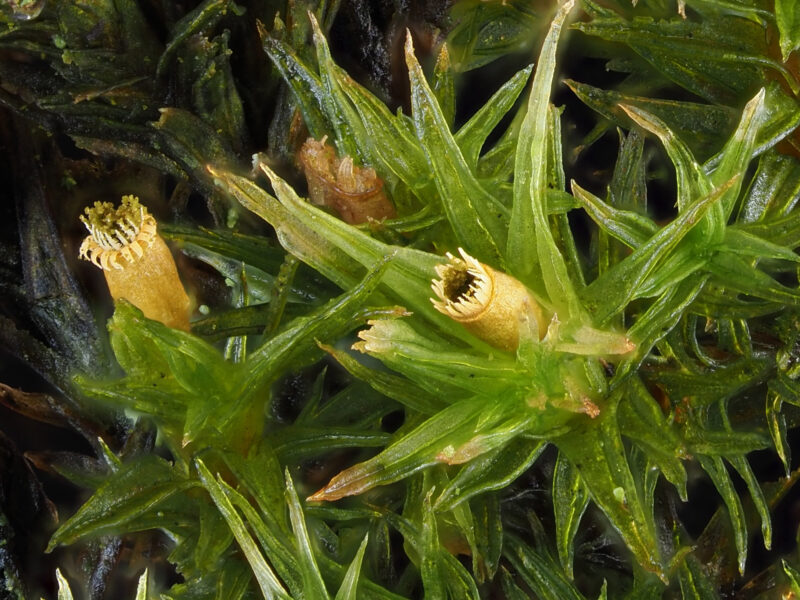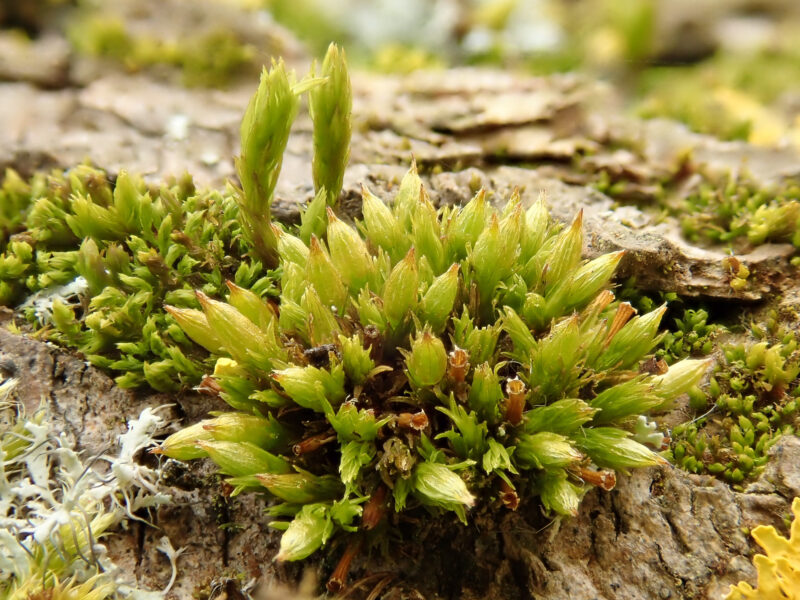Identification notes
Until recently this epiphyte was called Orthotrichum affine. However, recent taxonomic studies of Orthotrichum have divided the species – those with immersed capsule stomata being retained in Orthotrichum, whilst other monoicous species with superficial stomata have moved to the new genus Lewinskya. L. affinis is by far the commonest of these.
L. affinis can usually be recognised in the field by a combination of characters; it forms loose, dull green tufts with stems 1-2 cms long and has capsules with 8 pairs of pale outer peristome teeth that are ribbed when dry concealed among the upper leaves. Other common species of Orthotrichum that frequently grow with it on the bark of trees and shrubs – O. pulchellum, O. stramineum and in some areas, O. tenellum – are all much smaller, neater-looking species. O. diaphanum is also small and is immediately recognised by its whitish leaf hair-points. Lewinskya striata (formerly Orthotrichum striatum) is more similar in size and habit to L. affinis but its capsules are smooth when dry and have 16 pairs of outer peristome teeth. Its leaves are also much sharper-looking.
As a general rule, species of Lewinskya and Orthotrichum bear their capsules on a very short seta and in the majority of epiphytic species they are semi-concealed by the upper leaves. This makes them straightforward to separate from Ulota species, which often grow alongside them and which always have capsules on long seta well above the leaves. All of the epiphytic species of Ulota have leaves that crisp untidily when dry, rather than lying neatly against the stems as species of Orthotrichum and Lewinskya do.
Read the Field Guide account


